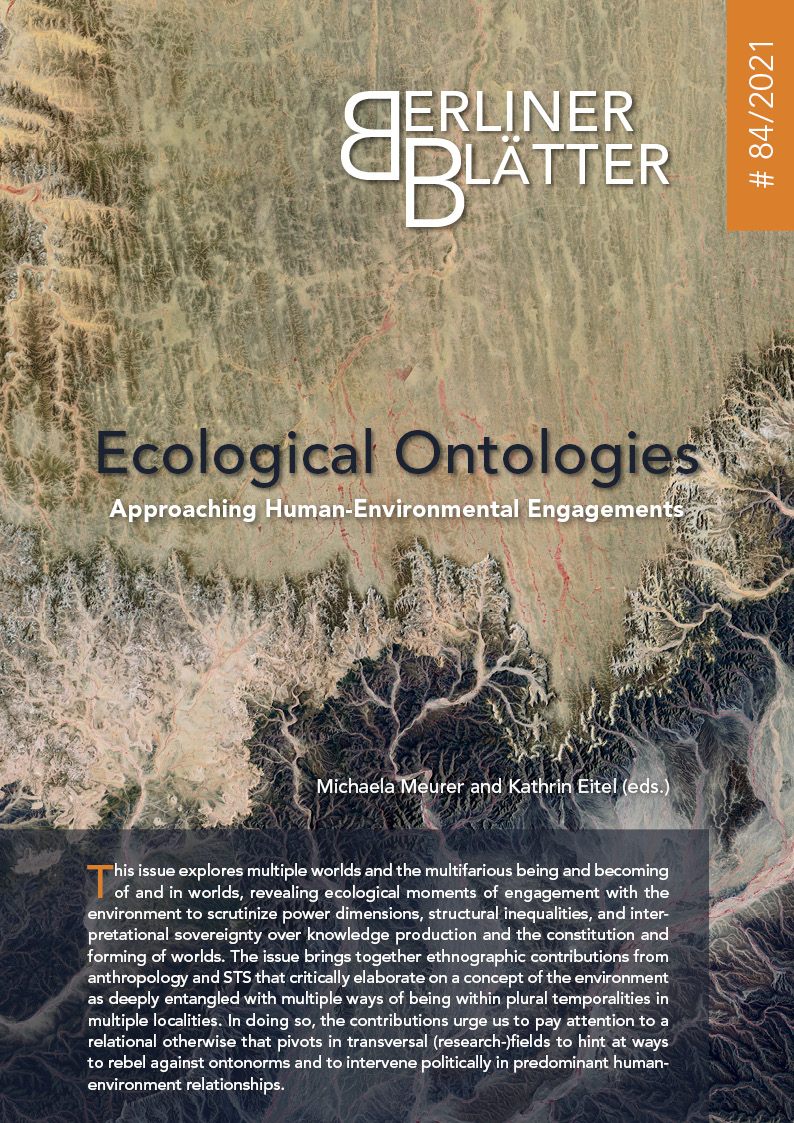Re-Imagining River Restoration
Temporalities, Landscapes and Values of the Emscher Set in a Post-Mining Environment
Keywords:
Underground, Ontologies, Ruins, Ruhr District, ValuationAbstract
The restoration of the Emscher began in the 1990s. It brings us to a former centre of industrialization – the Ruhr Valley in North Rhine Westphalia, Germany – and reveals challenges of post-mining, such as pollution and subsidence. Three concepts are central to understanding the restoration of the river: landscape, temporality and value. Through three stories we investigate these notions in different constellations and ask how they can help to reimagine the river: through (1) a proud, modern, reassuring story of liberation from a dirty past into a clean and flourishing present; (2) a story celebrating maintenance, and the efforts, work and resources of the enormous underground water infrastructure that supports the health and well-being at the surface; and (3) a ruin story reimagining the eternity burden imposed by the legacy of mining, and appreciating the arts of noticing how to live carefully in this area with this history. Thinking through the three stories helps appreciate different kinds of actors, knowledges and realities attached to the Emscher’s restoration. By developing the notions of landscape, temporality and value, we propose a multi-faceted approach to distinguish between ways of enacting a post-mining’s site ontology.
Downloads
Published
Versions
- 2021-06-21 (2)
- 2021-06-21 (1)
How to Cite
Issue
Section
License
Copyright (c) 2021 Berliner Blätter

This work is licensed under a Creative Commons Attribution-NonCommercial-ShareAlike 4.0 International License.








